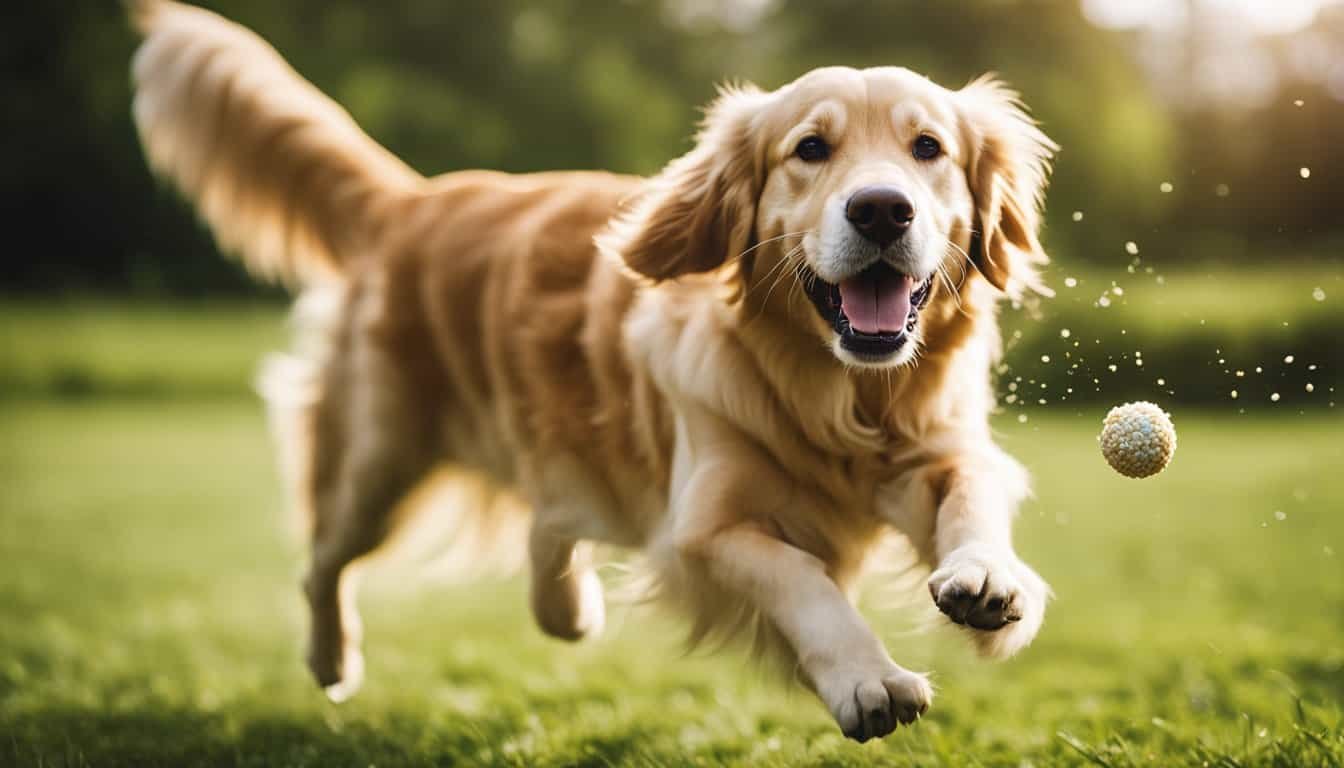Unlock the Power of Crate Training: A Guide for New Golden Retriever Owners
When it comes to training your furry friend, few methods are as popular and effective as crate training. But what is crate training exactly, and how can it benefit your beloved Golden Retriever? As someone who has worked with countless dogs through shelters and breeders, I can confidently say that crate training offers numerous advantages for both pets and owners alike.
Throughout this article, we’ll delve into the ins and outs of crate training, exploring its benefits for pups of all ages and sizes. From easing separation anxiety to promoting a sense of security, crate training can usher in significant positive changes in your pet’s behavior. But before we get ahead of ourselves, let’s start at the beginning with a clear understanding of what crate training entails. So, if you’re a new Golden Retriever owner looking to teach your pup new tricks, keep reading to learn about the power of crate training!
Understanding Crate Training: What It Is and How It Works
Crate training is an effective and humane method of teaching your dog or puppy appropriate behavior in a safe environment. As someone who has worked with thousands of dogs through dog shelters and breeders, I have seen firsthand the benefits of crate training.
At its core, crate training is about creating a sense of security for your furry friend. By providing them with their own space, you can help reduce anxiety and stress while also keeping them out of harm’s way when you’re not home.
To get started with crate training, it’s important to choose the right size crate for your pup. It should be large enough for them to stand up and turn around comfortably but not so big that they have room to use one side as a bathroom area.
Once you’ve selected the right size crate, begin by introducing it slowly. Allow your dog or puppy to explore the new space on their own terms before gradually encouraging them to spend time inside using treats or toys as positive reinforcement.
As they become more comfortable in their new space, begin leaving them alone inside for short periods at first before gradually increasing the length over time. This will help teach independence while also preventing unwanted behaviors like chewing on furniture or getting into things they shouldn’t be!
In conclusion, if you are looking for an effective way to teach appropriate behavior while reducing stress levels in your furry friend – consider giving crate training a try! With patience and consistency – both you AND your Golden Retriever will reap many rewards!
The Benefits of Crate Training for Dogs and Puppies
As someone who has worked with thousands of dogs through dog shelters and breeders, I can attest to the benefits of crate training for both dogs and their owners. Crate training is not only a great way to potty train your puppy, but it also provides a safe space for them to relax when they need some alone time.
For Golden Retriever owners who love their furry friends, crate training can be an effective tool in teaching new behaviors or breaking bad ones. By using positive reinforcement techniques like treats or praise, you can teach your pup that being in his crate is a good thing.
Additionally, crate training can prevent destructive behavior while you’re away from home. Dogs are pack animals that crave attention and stimulation. When left alone without any guidance or boundaries, they may resort to chewing furniture or other household items out of boredom.
By providing them with a comfortable space where they feel secure and at ease – such as their own personal den – you are giving them the structure they need while also keeping your belongings safe from harm.
Overall, the benefits of crate training far outweigh any negative stigmas associated with it. It’s important to remember that every dog is unique and may require different amounts of time spent in their crates based on age and temperament; however by taking care when introducing this method into your routine will ensure happy dogs!
How can crate training ease separation anxiety and promote a sense of security?
Crate training is a valuable tool for dog owners, especially those who have a new puppy or rescue dog. While some may view it as cruel confinement, crate training can actually ease separation anxiety and promote a sense of security for your furry friend.

« Can Golden Retrievers and Cats Coexist? Tips from a Dog Shelter Expert
How to Introduce Golden Retrievers to Children: Expert Tips from a Dog Shelter and Breeder Veteran »
As someone who has worked with thousands of dogs through shelters and breeders, I have seen firsthand the benefits that come from crate training. Dogs are den animals by nature and instinctively seek out small spaces to feel safe and secure. When introduced properly, the crate becomes their own personal sanctuary where they can relax without feeling overwhelmed or anxious.
For dogs with separation anxiety, being left alone can be extremely stressful. However, when trained to associate their crate with positive experiences like yummy treats or cozy blankets, they will start to see it as a safe haven rather than punishment.
Additionally, crate training is an essential part of housebreaking puppies because it teaches them bladder control while preventing destructive behavior such as chewing on furniture or shoes when unsupervised.
It’s important to remember that crates should never be used as punishment or confinement for extended periods of time. It’s also crucial to choose an appropriately sized crate that allows your dog enough room to stand up and turn around comfortably but not so much space they use one end as bathroom area.
Overall, introducing your Golden Retriever pup into the world of crates offers many benefits in terms of promoting calmness during times when you cannot always be there physically present while providing them more comfort in understanding what is expected from them within their space; building trust between you both along the way!
Creating a positive crate experience for your dog or puppy
When bringing a new furry friend into your home, it’s important to establish routines and boundaries early on. Crate training is one effective method for achieving this while also providing your pup with a safe haven of their own.
As someone who has worked with thousands of dogs through shelters and breeders, I highly recommend crate training as part of an overall positive reinforcement-based approach to dog ownership. Not only does it provide puppies with a sense of security and routine, but it can also prevent destructive behavior when left unsupervised.
But how do you create a positive experience for your dog or puppy when introducing them to the crate? First and foremost, make sure the size is appropriate – they should have enough room to stand up fully without hitting their head or turning around comfortably. It’s also essential that you gradually introduce them to the crate by allowing them access in short increments at first before building up time spent inside over several days or weeks.
Next, add comfortable bedding such as blankets or towels so they have something soft underfoot during naptime. Treats are another great way to incentivize good behavior while inside – try offering some praise every time they enter voluntarily!
Finally, don’t forget about exercise! Dogs need plenty of physical activity throughout each day in order not only stay healthy but mentally stimulated too; otherwise boredom may lead them towards destructive behaviors like chewing furniture leg etcetera which could be avoided if trained properly from puppyhood onwards using techniques like those discussed here today. Happy crating!

Create training tips and best practices for success.
Crate training is an essential tool for any new dog owner, especially those with energetic breeds like Golden Retrievers. As someone who has worked with thousands of dogs through shelters and breeders, I can attest that crate training done correctly can provide numerous benefits for both the dog and their owner.
First and foremost, crate training provides a safe space for your furry friend. Dogs are naturally den animals and feel secure in small spaces. A well-trained dog will view their crate as a cozy place to relax rather than a punishment.
When starting the process of crate training, it’s important to choose the right size kennel for your pup – one where they have enough room to stand up, turn around comfortably but not too much extra space that may make them anxious or encourage potty accidents inside their den area.
To help ease any anxiety or stress during this transition period there are several techniques you can use such as using toys or treats in order to get them comfortable entering/leaving on command so they know when it’s time stay put versus playtime outside!
Additionally, don’t forget about exercise! Providing plenty of physical activity throughout the day will help tire out your pup which is key since overstimulated puppies may be more likely to bark excessively while being crated.

Overall, if done properly Crate Training allows both owners & our furry friends alike peace-of-mind knowing everyone stays safe & happy while at home together!
Conclusion
Crate training is an important tool for helping your dog or puppy feel safe and secure. With the right guidance, crate training can be a successful and positive experience for both you and your pup. Understanding what it is, how to do it correctly, and some tips from those who have experienced success in their own homes can help make the process easier. For Golden Retriever owners looking to take full advantage of this valuable technique, connecting with other experts in the field may provide additional insight into making crate-training work best for you both. Join us now so that we can help Coach Fido on his journey towards becoming a great canine companion!














